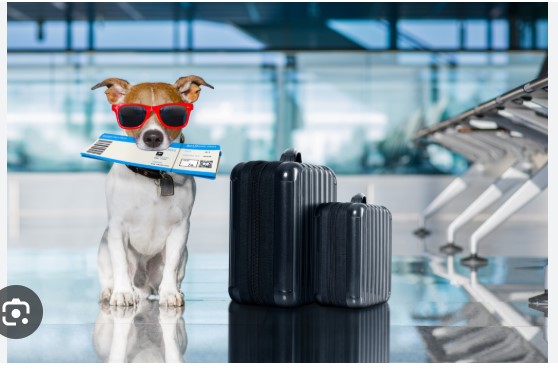
Moving abroad with your furry companion? Planning an overseas vacation and can’t bear to leave your pet behind? International pet travel might seem overwhelming at first, but with proper planning and preparation, you can safely transport your beloved animal across borders. This comprehensive guide walks you through everything you need to know about traveling internationally with pets, from documentation requirements to choosing the right transportation method.
Whether you’re relocating permanently or taking a temporary trip, understanding the complexities of International pet travel will help ensure your pet’s journey is as smooth and stress-free as possible. We’ll cover the essential steps, common challenges, and expert tips to make your pet’s international adventure a success.
Understanding International Pet Travel Requirements
Each country has specific entry requirements for pets, and these regulations can vary significantly depending on your destination and your pet’s origin country. Most nations require pets to have current vaccinations, health certificates, and sometimes quarantine periods upon arrival.
The key to successful international pet travel lies in starting your preparation early. Some requirements, such as rabies antibody testing or specific treatments, must be completed months before travel. Missing a single requirement could result in your pet being denied entry or facing extended quarantine periods.
Essential Documentation for Pet Travel
Your pet will need several important documents for international travel. A health certificate issued by a USDA-accredited veterinarian is typically required within 10 days of travel. This certificate must often be endorsed by the USDA’s Animal and Plant Health Inspection Service (APHIS).
Additionally, you’ll need proof of current vaccinations, particularly rabies vaccination. Many countries require rabies antibody testing performed at approved laboratories. Some destinations also mandate specific treatments for parasites or other health concerns before entry.
Choosing the Right Transportation Method
Airlines offer different options for international pet travel, each with specific advantages and limitations. Small pets under certain weight limits can often travel in the cabin with you in an approved carrier. This option provides the most comfort for both you and your pet during the journey.
Larger pets typically travel as cargo in temperature-controlled compartments. While this might sound concerning, airlines have strict protocols to ensure pet safety during cargo transport. Some airlines specialize in pet transportation and offer enhanced services for international pet travel.
For certain routes or situations, ground transportation combined with sea travel might be an alternative option, though this is less common and often takes significantly longer than air travel.
Pre-Travel Health Preparations
Schedule a comprehensive veterinary examination well before your planned departure date. Your veterinarian will assess your pet’s fitness for travel and ensure all health requirements are met. This visit is also an opportunity to discuss any concerns about your pet’s ability to handle the stress of international travel.
Consider your pet’s temperament and health condition when planning international pet travel. Elderly pets, very young animals, or those with health conditions may face additional challenges during long-distance travel. Your veterinarian can advise whether travel is appropriate for your specific pet.
Some pets benefit from anti-anxiety medication or sedation during travel, though many airlines have restrictions on sedated animals due to safety concerns. Discuss these options with your veterinarian to determine the best approach for your pet.
Country-Specific Regulations
Different countries have vastly different requirements for international pet travel. The European Union, for example, has standardized pet passport systems that facilitate travel between member countries. However, traveling to EU countries from outside regions requires meeting specific entry requirements.
Countries like Australia and New Zealand have some of the strictest pet import regulations globally, often requiring lengthy quarantine periods regardless of documentation. These nations have these strict policies to protect their unique ecosystems from invasive diseases and parasites.
Some countries prohibit certain dog breeds entirely, while others have seasonal restrictions or limitations based on temperature conditions. Research your specific destination’s requirements thoroughly, as regulations can change frequently.
Planning Your Pet’s Journey
Book your pet’s travel well in advance, especially during peak travel seasons. Airlines have limited space for pets in both cabin and cargo areas, and popular routes may fill up quickly. Confirm your booking and reconfirm all requirements several weeks before departure.
Choose appropriate travel carriers that meet both airline requirements and provide comfort for your pet. The carrier should be large enough for your pet to stand, turn around, and lie down comfortably, but not so large that your pet might be injured if the carrier shifts during transport.
Prepare your pet for the carrier by allowing them to spend time in it before travel day. This familiarization helps reduce stress and makes the journey more comfortable for your pet.
Managing Travel Day Logistics
Arrive at the airport with plenty of extra time for check-in procedures. International pet travel often requires additional documentation review and processing time. Bring all original documents, as photocopies are typically not accepted.
Feed your pet a light meal several hours before departure, but avoid feeding them immediately before travel to prevent motion sickness. Ensure your pet has access to water, but not so much that they become uncomfortable during the journey.
Consider the timing of your flight carefully. Avoid traveling during extreme weather conditions, and choose flights during cooler parts of the day when possible, especially if your pet will be traveling as cargo.
Post-Arrival Considerations
Upon arrival at your destination, be prepared for customs and agricultural inspections. Have all documents readily available and be patient during the review process. Some countries may require additional health checks or examinations upon arrival.
Help your pet adjust to their new environment gradually. International pet travel can be stressful, and animals may need time to recover from the journey and adapt to new surroundings, climate, and time zones.
Locate veterinary services in your destination area before you need them. Having a local veterinarian identified can provide peace of mind and ensure quick access to care if needed.
Common Challenges and Solutions
One of the most frequent issues with international pet travel is incomplete or incorrect documentation. Double-check all requirements and have documents reviewed by qualified professionals before travel. Keep copies of all documents in multiple locations.
Flight delays and cancellations can be particularly stressful when traveling with pets. Have contingency plans in place, including backup accommodation that accepts pets and understanding airline policies for delayed pet travel.
Language barriers can complicate international pet travel, especially when dealing with customs officials or veterinarians in foreign countries. Having key documents translated and learning basic pet-related vocabulary in the local language can be helpful.
Making International Pet Travel Successful
Successful international pet travel requires careful planning, attention to detail, and patience throughout the process. Start your preparations several months in advance to ensure you have adequate time to meet all requirements and handle any unexpected challenges that arise.
Consider working with a professional pet relocation service if you’re dealing with complex regulations or multiple pets. These services specialize in international pet travel and can help navigate complicated requirements while ensuring your pet’s safety and comfort.
Remember that while international pet travel requires significant preparation, millions of pets travel internationally each year safely and successfully. With proper planning and preparation, you and your pet can embark on your international adventure together.
 :
https://insidetechie.blog/
:
https://insidetechie.blog/












